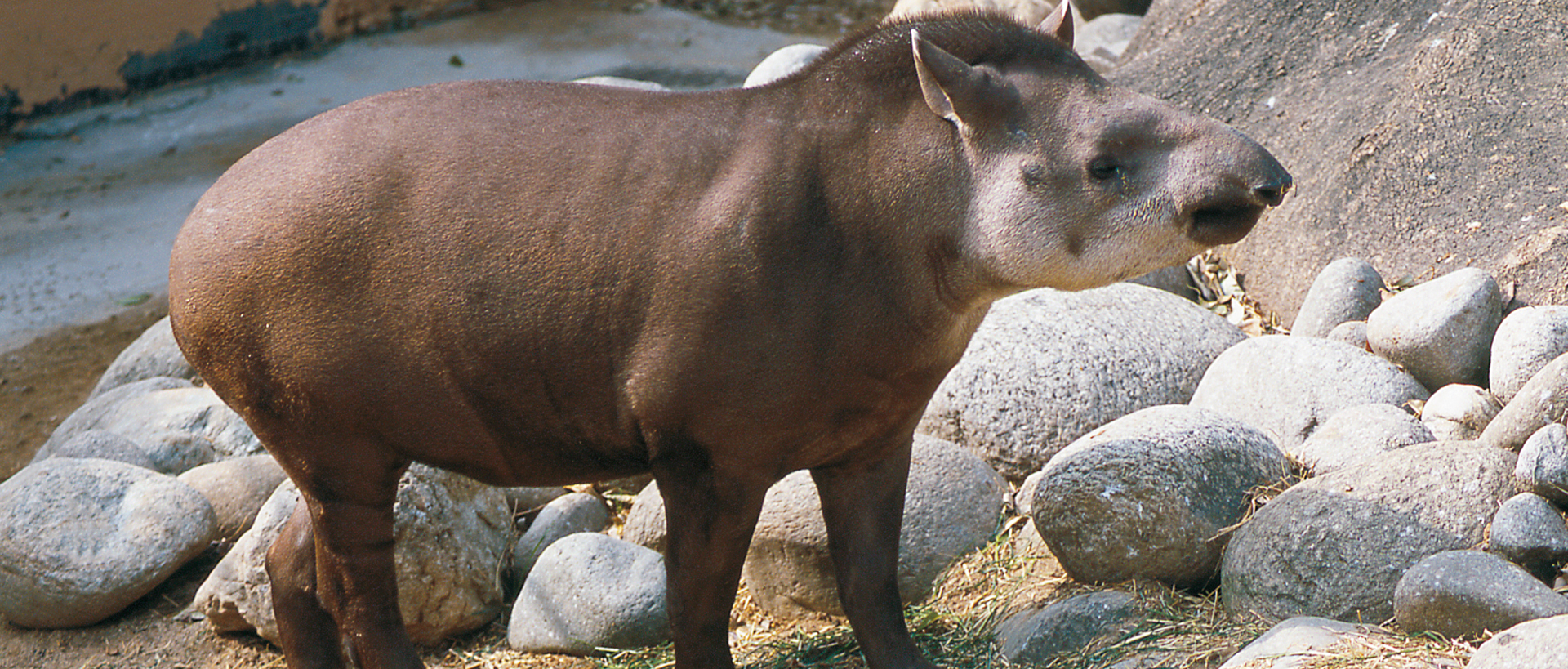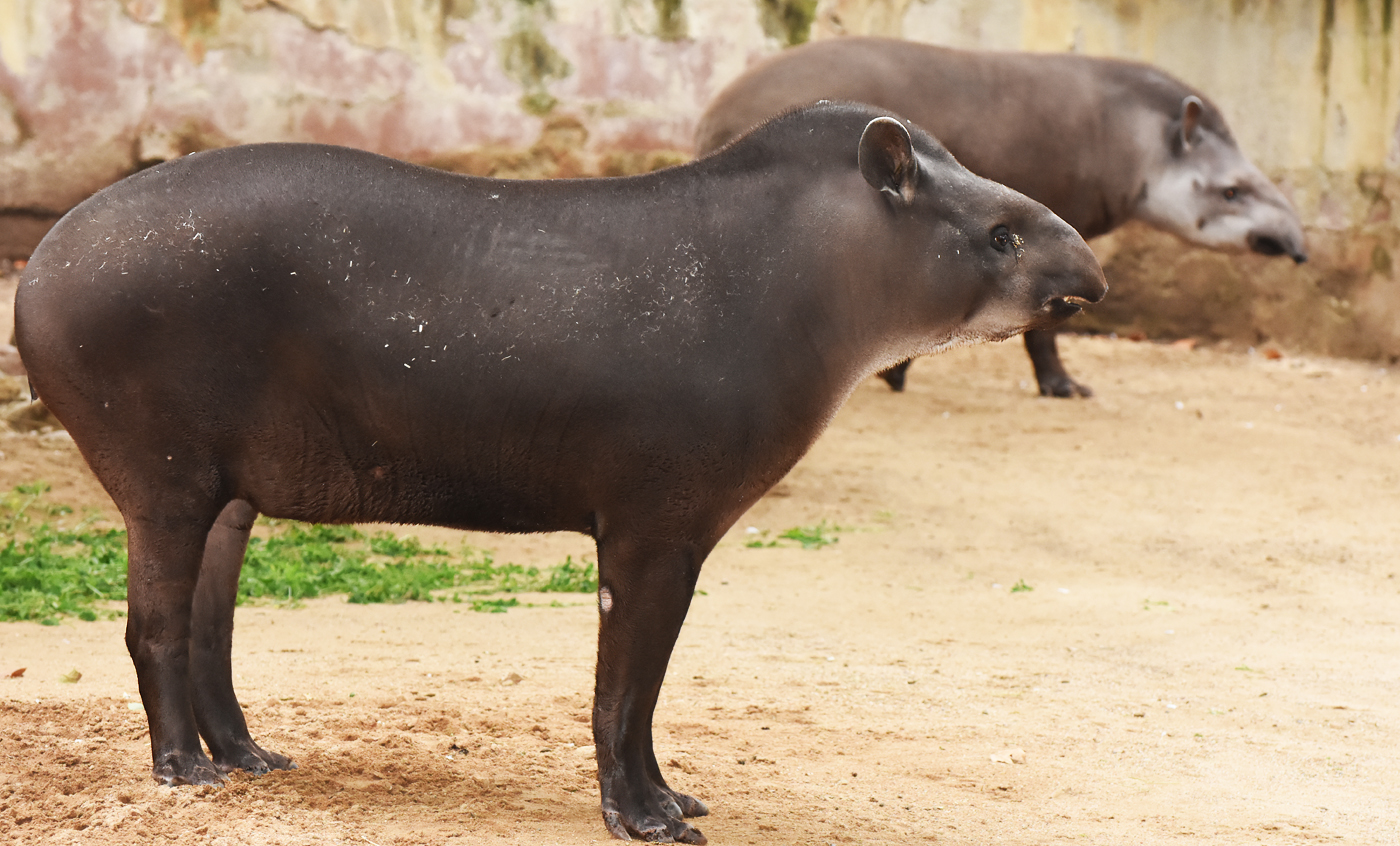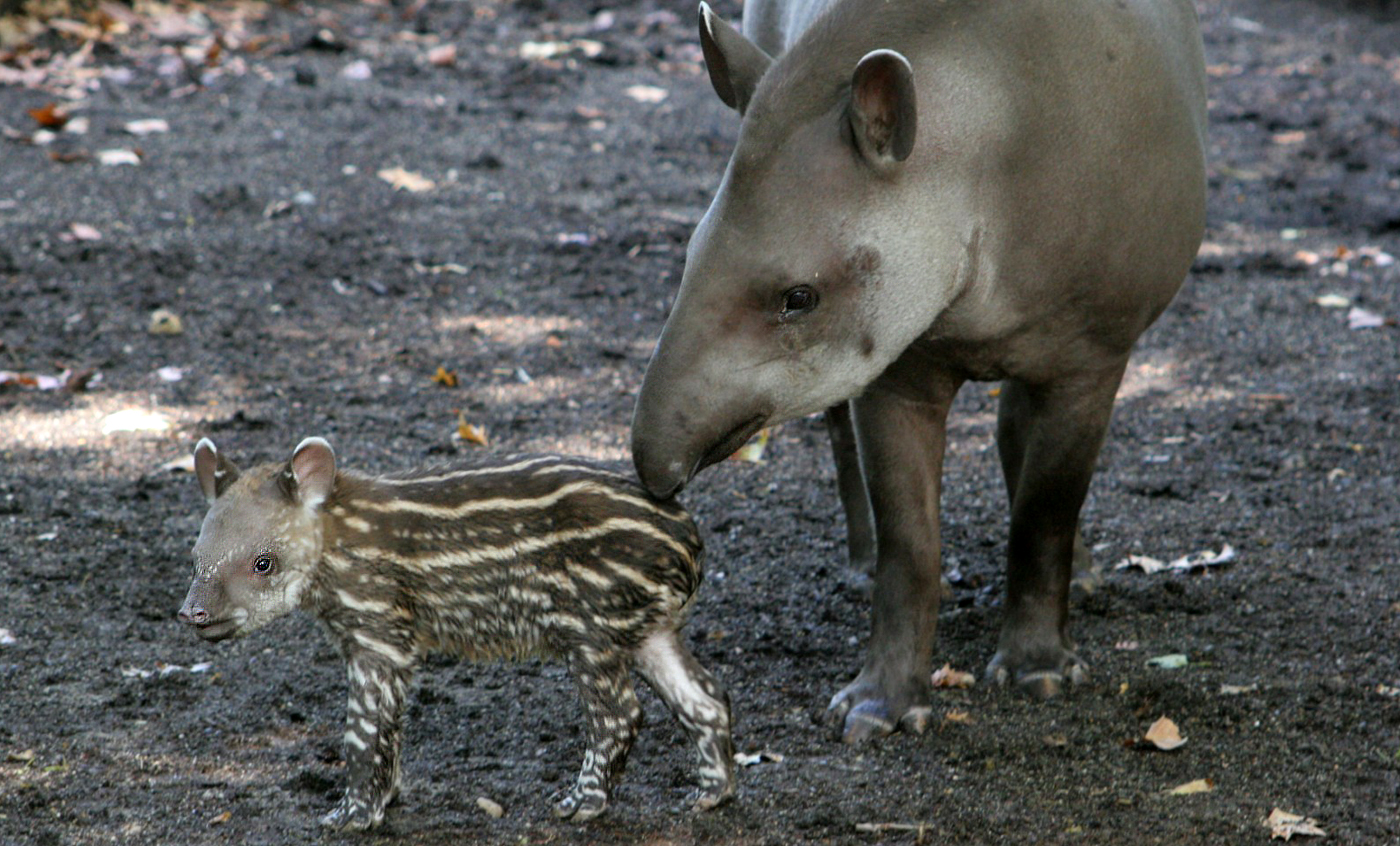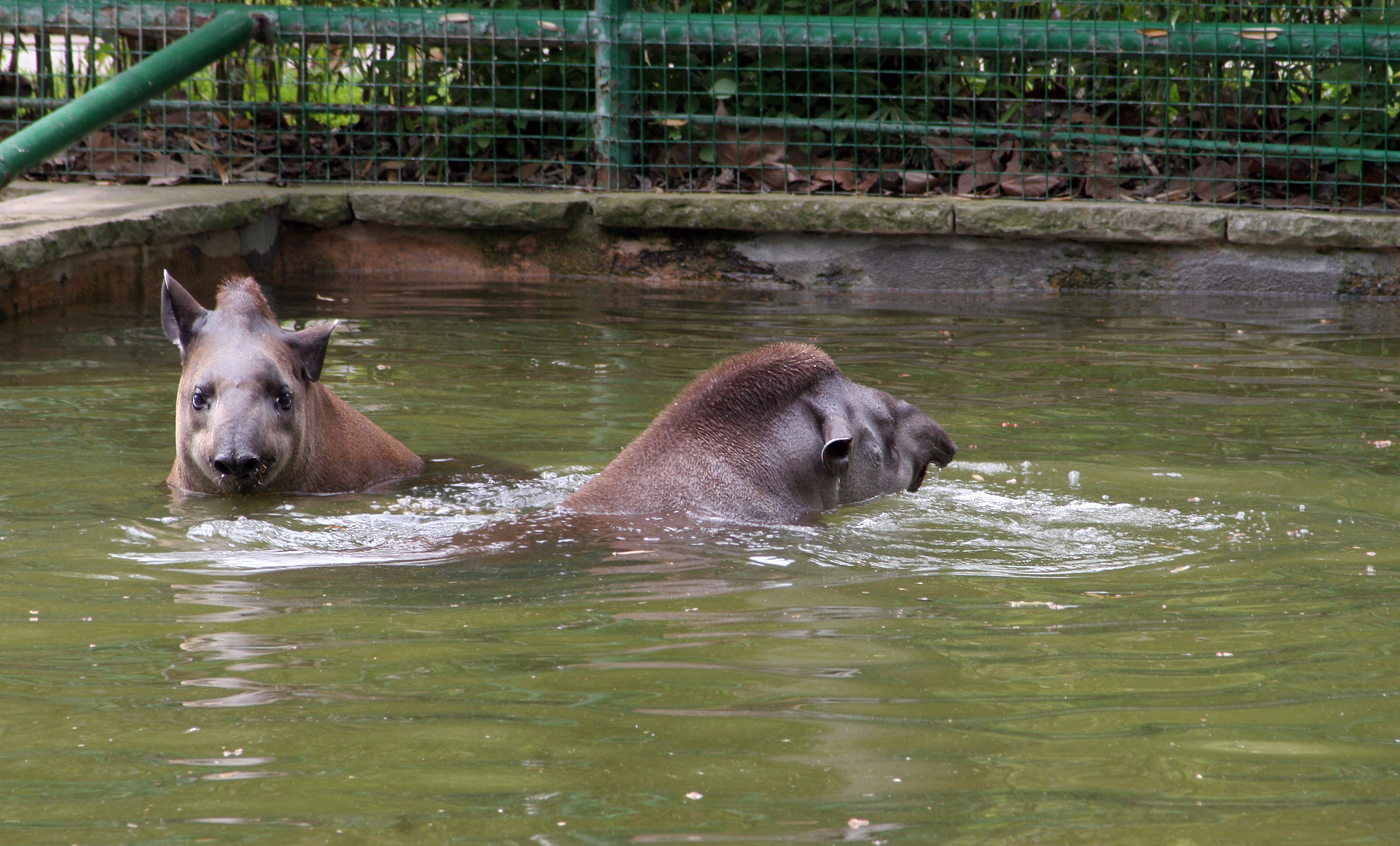Brazilian tapir
The South American tapir lives in rainforests and wet forests of an extensive part of South America. Solitary and mainly nocturnal, it is a skilled swimmer that spends a lot of time in the water. It is a browser that feeds on grass, aquatic plants, leaves, tender sprouts and fruit.
Unlike adults, who have a uniform brown colour, calves have white stripes and spots that help them camouflage among the vegetation.
Breeding program
Natural habit
From Colombia and Venezuela to Paraguay and northern Argentina.
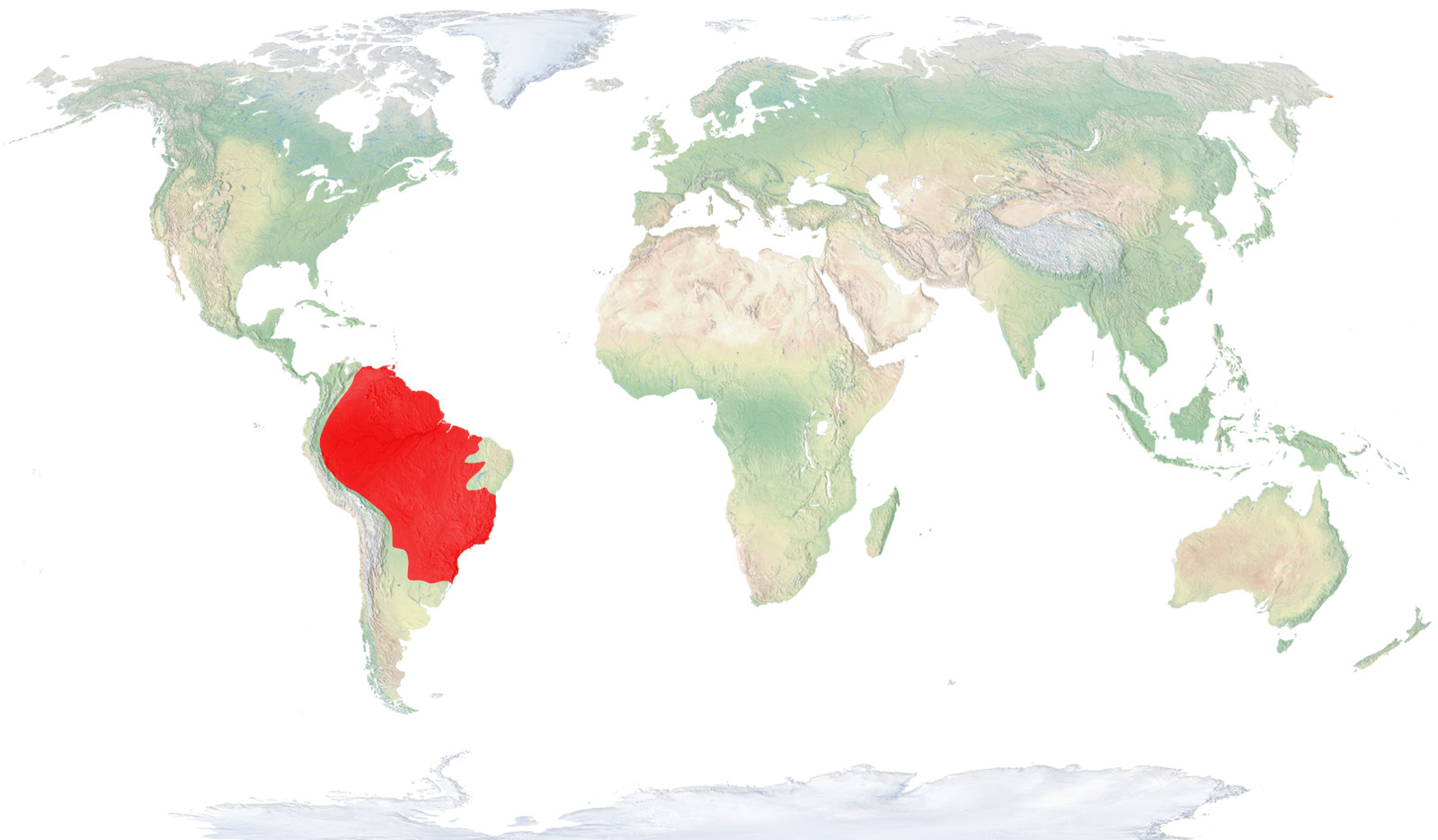
- Distribution / Resident
- Breeding
- Wintering
- Subspecies
Risk level
- Extint
- Extint in the wild
- Critically endangered
- In Danger
- Vulnerable
- Near threatened
- Minor concern
- Insufficient data
- Not evaluated
Taxonomy
Physical characteristics
Biology
Reproduction
Biology
It is robust and compact, with a very dark brown coat. Its ears are small, rounded and have white edges. They have a characteristic small trunk and a narrow crest on the top of the head.
The South American tapir lives in rainforests and wet open forests, preferably near rivers and swamps, from sea level to 2,000 m of altitude.
It feeds on grass, aquatic vegetables, leaves, tender sprouts and fallen fruit.
After a gestation of thirteen to fourteen months, a single calf is born, exceptionally two. Unlike adults, who have a uniform brown colour, calves have apparently eye-catching white stripes and spots, that actually help them perfectly camouflage among the vegetation, when they remain still, before any danger.
Solitary and mainly nocturnal, it is a skilled swimmer that spends a lot of time in the water. Its main predators are jaguars and cheetahs and, exceptionally, giant anacondas.
Despite being the most abundant tapir species in the world and being quite common in many areas, its populations are quickly decreasing due to excessive hunting and the accelerated deforestation of the rainforests it inhabits.



